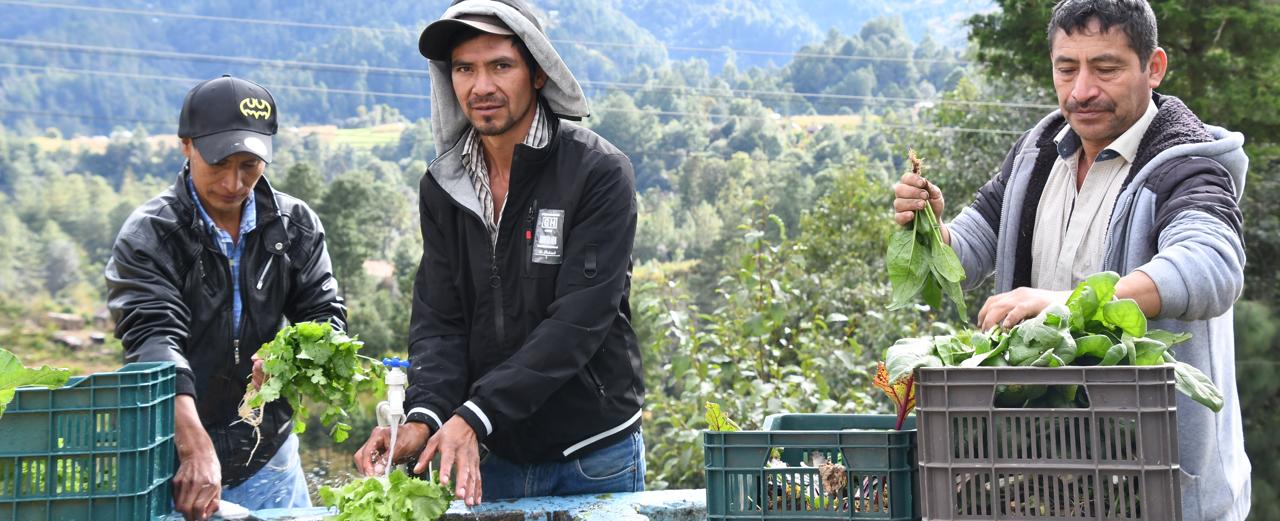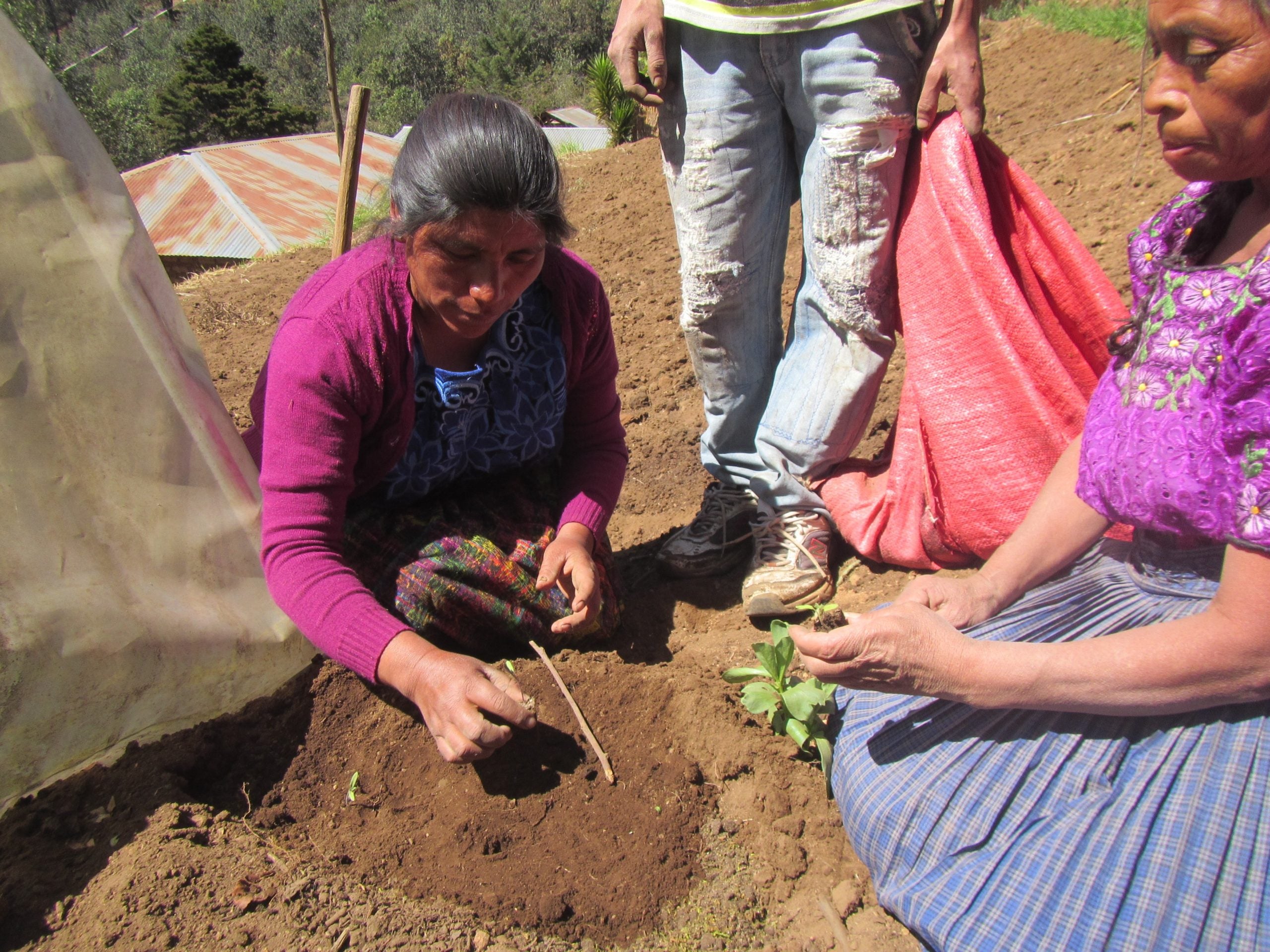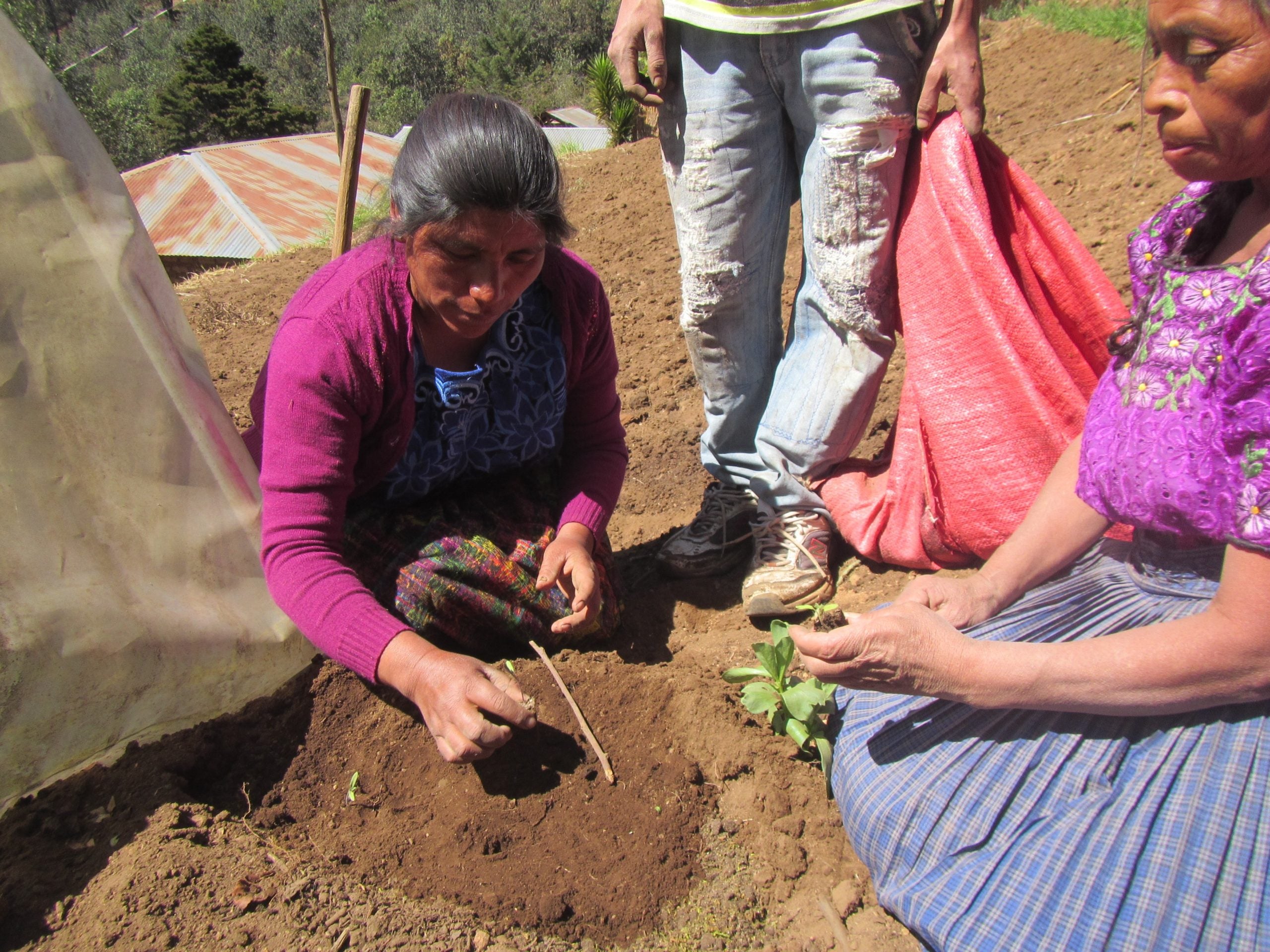Day 17
A vegetable plant for a small farming family in Guatemala
 Sow the future, protect the climate!
Sow the future, protect the climate!


Healthy food for small farming families in Guatemala

need
Reliable harvests and healthy food for indigenous smallholder farming families from remote highland communities in Guatemala.
activity
Small farming families receive seeds, agricultural tools and training in agroecology and vegetable cultivation.
Measurable performance
Number of vegetable plants grown and amount of crop yield per plant.
Result
Greater variety and year-round availability of food enables a balanced, healthy diet as well as the sale of surplus food.
Systemically relevant impact
Improved resilience of agricultural production to the impacts of climate change, increased food security and reduced poverty among smallholder farming families.
background
The good deed
AboutGuatemala
Guatemala City
Capital city
16,604,030
Population
$7,378
Gross domestic product
per capita per year
Rank 126 of 189
Human Development Index
(Human Development Index)






